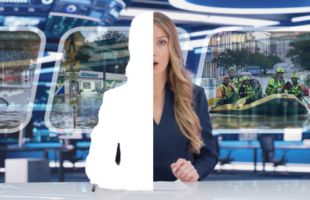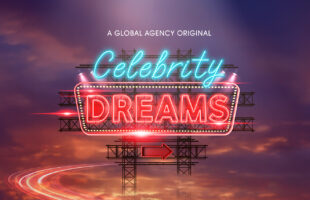For as long as television had Walt Disney, audiences had been enchanted by all that fairy dust goodness sprinkled generously in children’s programming. Lately though, a string of folklore and fairy tale fare have invaded liveaction drama, threatening to retreat the popular “undead” genre to oblivion. Just what is brewing in fairy tale land?
Grimm versus Grimm
US television witnessed a fairy tale showdown last October, when two Grimm-inspired dramas premiered in the same week. ABC’s Once Upon A Time, currently airing on FOX Movies Premium (FMP) in Asia, not only fronted Snow White and the Evil Queen as leads, but also surfaced many Grimm faves like the Seven Dwarves, Rumpelstiltskin, Cinderella and Red Riding Hood. Audiences reciprocated and the series was crowned ratings champion, with a second season confirmed. Then there is rival NBC, whose cop show Grimm has homicide detective Burkhardt nabbing supernatural murderers a la “Buffy.”
That was last year. This year, another clash was announced; with Beauty and the Beast receiving the TV treatment from both US studios ABC and CW – the former a period remake while the latter a modern adaptation starring Smallville’s Kristin Kreuk. As of press time, ABC has dropped its Beauty and the Beast adaptation.
Not to be outdone, feature films will duke it out this year as well. The gritty Snow White and the Huntsman from NBC Pictures (in theatres in June) will give the cheerier Mirror Mirror (starring Julia Roberts) a run for its money – furnishing further proof of this fairy tale frenzy.
Joon Lee, Senior Vice President of Programming, Creative and Channel Operations, FOX International Channels in Asia (FIC), acknowledges the trend.
“I think it began with the success of features like Enchanted and Alice In Wonderland. It’s probably about time now to look past vampires and monsters to see where else you can bring viewers. Seems like a ripe time for fantasy and fairy tales,” says Lee.
The pirates are back!
Three notable high-sea swashbucklers from the other side of the Atlantic will also challenge the American-made fairy tales this year. BBC Worldwide’s Sinbad (12 x 60’) will sail this July, while Elijah Wood digs for buried treasure in Sonar Entertainment’s two-parter Treasure Island. Also, the evergreen (pun intended) Peter Pan takes flight in the twopart Irish production Neverland – accompanied by Tinkerbell; featuring the voice of actress Keira Knightley. Both Neverland and Treasure Island will receive Asian premieres on FMP this year.
For executive producers and creators of Once Upon a Time Edward Kitsis and Adam Horowitz, previously of Lost fame, the genre has a quality that is truly universal.
“For us, they were the first stories we hear as children and that really inspired us,” said Kitsis. “Adam and I always held that at the back of our minds when we were deciding on what kind of shows we would want to watch and eventually produce.”
BBC Worldwide’s Creative Director & Head of Indie Drama for Sinbad, Sarah Doole, attributes the interest to what’s happened outside of television.
“In a time of uncertainty and worry about people’s jobs, their bank accounts and their future, fantasy and escapism and something that the whole family can watch together; and a collective entertainment experience is really important. So we are definitely in the market for a big fantasy, family escapist drama,” says Doole.
Escape to Neverland
Let’s face it. Who doesn’t look at the mirror and wish to never-growold in Neverland? When television comes along and affords the opportunity to experience fantasy vicariously, we grab it.
“Fantasy and fairy tales incorporate action, adventure and drama but perhaps most importantly, the genre has a deep history of romantic storylines. It also feels fresh because prior to this point it was an under-served genre,” explains Lee.
With networks and movie studios straining to outdo one another, how would one stand out from the many tales of wand-wielding fairies and evil witches? Some observable strategies:
Plot twists: the “Reimagining”
The creative revamp of a plot seems to be the flavour for the season. In Mirror Mirror, Snow White is the one who ends up saving the day while Prince Charming shivers shirtless in the cold. In the Three Little Pigs-inspired episode of Grimm, a cop who’s actually a Bauerschwein (boar) emerges from a mud-filled bathtub (his mudtherapy) and proceeds to point a shotgun at a Blutbad (wolf). For adults indoctrinated with classic (read: predictable) endings, plot twists absolutely captivates, and astonishes.
Snow White and the Huntsman’s producer Joe Roth relishes the chance of a reimagination.
“This is an incredible opportunity to create a world that people haven’t seen before. We’ve built a universe that touches on her (Snow White) themes, including the iconic metaphors and imagery, but everything is skewed. We still have the mirror, the red apple and the evil Queen, but we’ve thrown into that massive battles and a rebellion. This story is much bigger, and the stakes are much higher,” describes Roth.
“We weren’t interested in just retelling the stories, we were trying to tell you what happened after the happy ending or before them,” says Kitsis of Once. “We are more interested in why is the evil queen evil or how did the magic mirror get in the mirror, not simply retelling you what you knew. Another thing that is exciting about our show is what we call a ‘mash-up.’ As you will see in the pilot, Snow White is friends with Red Riding Hood, Geppetto and Pinocchio and all these characters of different fairy tales come together on the show and interact with each other.”
The modern setting: they-liveamong- us!
Grimm’s contemporary setting – that your neighbour might well be a slayer from centuries of old, certainly ups the shock factor. In Once, Red Riding Hood masquerades as a waitress (with red hair extensions and the skimpiest red shorts) and works in a diner called Granny’s – one cannot get more contemporary than this!
“In Once, setting the majority of the story in present day allows the characters to be more identifiable to viewers who aren’t heavily invested in the fantasy/fairy tales genre so it broadens the potential viewer base,” explains FIC’s Lee.
Still, do show creators fear the “reimagined” plots will confuse or worse still, alienate audiences? Sarah Doole does not think so.
“We started off with a complete re-imagining. We took Sinbad, the central character, whom people kind of vaguely know about, and we kind of move our story around his character. So it’s driven by the character Sinbad rather than trying to retell any of the stories that people may or may not know from the books they’ve read. It goes right back to the ancient Greeks I suppose, that heroes are on a journey in a personal and a kind of physical manifestation,” explains Doole.
Programming Director at NBC Universal Marianne Lee, whose channel airs Grimm in Asia, explains that “a solid premise and interesting characters portrayed well will always appeal to viewers. A refreshing take on legendary stories definitely is promising as a strong plot, and mystery, fantasy, drama are all appealing TV material. Twists in a plot would provide the surprise element that will wow audiences and keep them coming back for more.”
The IP connection
As networks increasingly worry about investing in productions with no guarantee of success, the triedand- tested fairy tale genre remains attractive, especially so when ideas come “rights free”; ensuring more creative and financial liberties.
“The great thing about these mythological stories is that they’re in the public domain so Sinbad isn’t in copyright. It’s a mythological story based on a collection of all sorts of different stories in the tales of the 1001 Arabian Nights. So that (IP rights) wasn’t a concern to us,” explains Doole on Sinbad.
For Once, Horowitz points out how ABC was able to obtain permission from parent company Disney to modify the Snow White story.
“In the original Grimm story, there aren’t seven dwarves named Dopy, Doc and Grumpy and so on. Those were Disney inventions. For us to use these iconic representations and then tell our own story with them, we needed approval from Disney, so we got in touch with the brand management people who were really great to collaborate with and they gave us a lot of freedom to play with some of their characters,” explains Horowitz.
So what’s in it for Asian broadcasters?
For BBC Worldwide, mythology and folklore that is global is definitely “sellable.”
“There’ve been a lot of shows about vampires and werewolves, and that is very much rooted in a western, European tradition of mythology. So we were very keen on Sinbad because it’s much more global than that. You’ve got the element of Asia, you’ve got the element of medieval Basrah and the kind of rise of Arabic culture. And it gave us the opportunity to have a really multi-national cast,” says Doole. FIC recognises a good script and storyline as main selling points for Asia.
“In the case of Once, the series is unique because it deals with two worlds: the modern versus the fantasy world. The viewer is always curious as to what links the two worlds and who in the town really knows what’s going on. You can see the strong influence of the writers/ creators from Lost here, and that’s one of the main reasons why Once is so watchable,” says Joon Lee.
The strong influence Lee refers to is the Once duo Kitsis and Horowitz, who had incubated this fairy tale idea years earlier.
“We’ve had this idea for nine years and we were on Lost, of course, and when that ended, ABC asked if we had an idea for a new show and this was what we pitched them and I think we got kind of lucky that we waited long enough for it to be in pop culture again,” says a grateful Kitsis.
“What’s so exciting about these stories is that they seem to cross all cultural barriers and that every culture in society has a version of these stories and it is a common mythology that we all share,” explains Horowitz.
The last bite
So are we seeing the last of vampires and werewolves? Doole and Horowitz see both genres co-existing.
“I think there’s lots of other supernatural, horror, mythological areas that can be explored, because they’re really a good base for fantastical, escapist dramas, so I don’t see that we’re at the end of that fantasy, escapist trend. I think we’re probably just on the beginning of where people can imagine. There are some fantastic writers out there with great imaginations, and people will always want that kind of drama,” says Doole.
“It’s really an exciting time when you see all sorts of genres from fairy tales to pop shows, to medical shows to science fiction to werewolves and vampire stories. Every genre under the sun is out there right now and I think it is very exciting that audiences seem to be embracing so many different kinds of storytelling,” explains Horowitz.
Happily ever after?
The trend towards fairy tales is like the yellow brick road; long and winding, with full of surprises at every turn. Feature films are certainly leading the way, with television hot on its heels. We hear next year, a bean will grow into the heavens where giants roam; the kids from the gingerbread house grow up to be mercenaries; a boy who lies gets a silver-screen treatment; plus we hear Emma Watson has been cast as Belle for (yet) another Beauty and the Beast incarnation; which only leaves us to ask: “Mirror mirror on the (plasma TV) wall, who’s the fairest of them all?”
THE END







